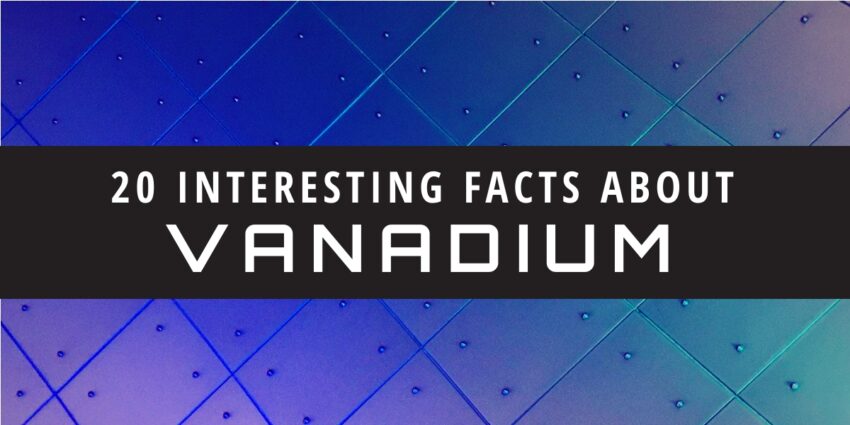Vanadium is a chemical element with symbol V and atomic number 23. It is a hard, silvery-grey, ductile, malleable transition metal. Vanadium is rarely found in nature, but once isolated artificially, the formation of an oxide layer somewhat stabilizes the free metal against further oxidation.
Beyond the elemental basics, though, what else should we know about vanadium? Check out the 20 interesting facts below!
- Vanadium was first discovered by Spanish scientist Andres Manuel del Rio in 1801. However, Del Rio was later convinced by other scientists that what he had discovered was actually a form of chromium. The element was re-discovered by Swedish chemist Nils Sefstrom in 1830.
- Vanadium was isolated in 1867 by the English chemist Sir Henry Enfield Roscoe when he combined vanadium trichloride (VCl3) with hydrogen gas (H2).
- Vanadium gets its name from the Scandinavian goddess of beauty “Vanadis”. It was Nils Sefstrom who named the element.
- Vanadium went through a few other names including panchromium and erythronium.
- Vanadium is used as an alloy to improve the strength of steel. Around 80 percent of the vanadium produced is alloyed with iron to make a shock- and corrosion-resistant steel additive called ferrovanadium.
- Vanadium steel is used to manufacture automobile components as well as high end bicycle frames.
- Vanadium is alloyed with aluminum and titanium to create a very strong alloy that is used for special applications such as dental implants and jet engines.
- Vanadium alloys are used to make nuclear reactors because of their low-neutron-absorbing properties.
- Vanadium can be combined with gallium to form superconductive magnets.
- One of the first uses of vanadium was in the steel chassis of the 1908 Model T Ford.
- In 1911, German chemist Martin Henze discovered vanadium in the blood cells of sea squirts.
- Vanadium was used to make portable artillery pieces and body armor in World War I.
- Vanadium can be found in more than 60 minerals. You won’t find vanadium as a free element in nature very often, but the element has been found in vanadinite, magnetite, patronite, carnotite, and more.
- Vanadium is important for the green energy movement. Vanadium flow batteries store their energy in tanks. It’s much easier and lower cost to adapt flow batteries to industrial-scale applications without adding huge cost than with lithium batteries.
- Almost all the world’s mined vanadium ore comes from China, Russia, or South Africa.
- Vanadium is considered a CRM (Critical Raw Material) by countries around the world.
- Vanadium makes up 150 parts per million (ppm) of the Earth’s core and comprises 0.019 percent of the Earth’s crust.
- The cosmic quantity of vanadium in the universe is about 0.0001 percent. Vanadium can be detected spectroscopically in the Sun’s rays and occasionally in the light of other stars.
- Vanadium can be found in trace amounts in many types of food, including mushrooms, black pepper, parsley, dill weed, shellfish, beer, wine and grain.
- Vanadium is resistant to corrosion and can withstand and stay stable even against Sulfuric acid, Hydrochloric acids, and alkalis.
